Another beautiful sunny Monday, and we decided to check out the gun emplacements at Harington Point, one of the most extensive of Dunedin’s old fortifications.
 This called for a pleasant seaside drive up Portobello Rd. We noticed a lot of bird activity – including two elegant white spoonbills – and wondered about it, until we spotted some patches of red washed up on the shore. Of course, this is all part of last week’s krill event. We figured we’d check it out on the way back.
This called for a pleasant seaside drive up Portobello Rd. We noticed a lot of bird activity – including two elegant white spoonbills – and wondered about it, until we spotted some patches of red washed up on the shore. Of course, this is all part of last week’s krill event. We figured we’d check it out on the way back.
We forged onwards, past Portobello, past Harwood, past Otakou, eventually reaching the final hill up to Harington Point.
As we began to climb, we passed through the concrete barrier that flanked the road, with two large concrete cylinders lying nearby. In the event of an invasion, the great cylinders would have been rolled on to the road to complete the roadblock, preventing the enemy force from reaching the site of the fortifications. I tucked this information away, feeling it might be useful in the event of a zombie outbreak.
Not far past the barrier and before reaching the summit of the hill, there is a gravel nook at the side of the road for parking. Not only is it a good place to access the gun emplacements, it’s also a great spot to stop and admire the harbour.

We headed up the road a way until we reached a gap in the barrier. From here we stepped down onto a gorsey path leading to the fort. As we descended, butterflies flew up from the grass and danced around us. I was able to identify both tussock ringlet and the smaller copper butterflies.
The path led us directly to a concrete arch set into the hillside. Peering inside, all we could see was a concrete passage coated with graffiti.
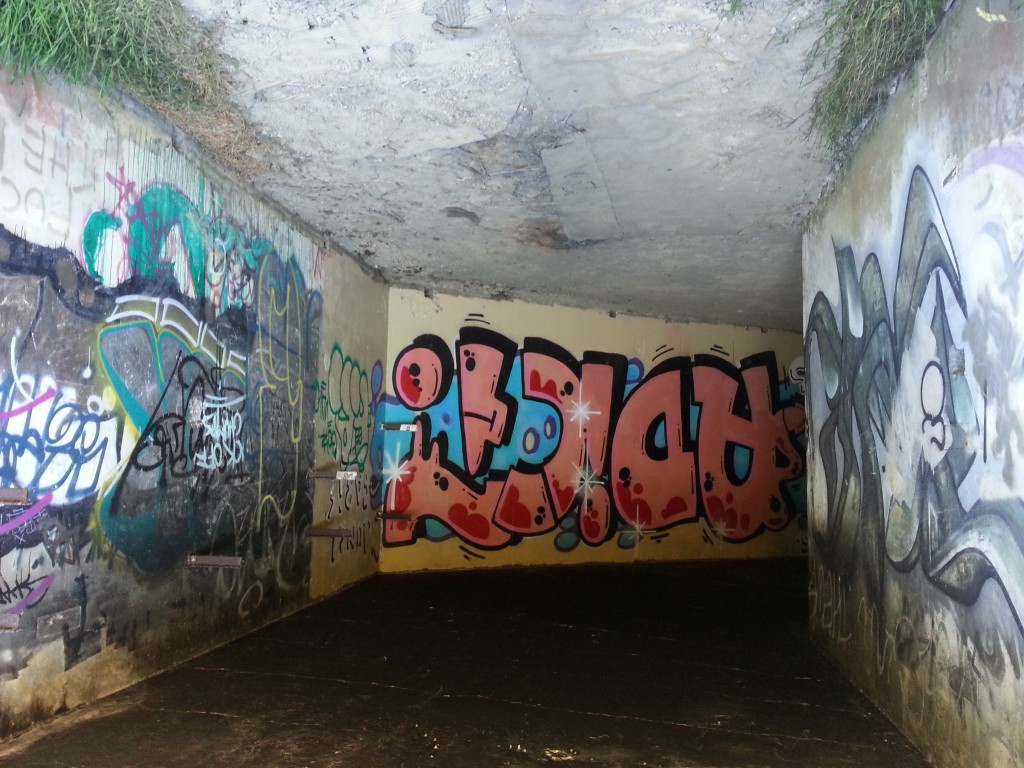
These fortifications date back to the 1890s, built amidst panic that the powerful Russian Empire might turn its imperialistic sights on our small undefended country. Prior to that, New Zealand had been too preoccupied by internal problems such as the Maori Wars to pay much attention to threats from foreign powers. But with those settled, and with the press fanning the flames of paranoia, the government decided it must look to defending our harbours.
Dunedin was vulnerable by two methods of attack from sea. An enemy fleet could stand to the south, off St Clair, and bombard the city from that position, hence defences at Lawyers Head and above Second Beach. Or a fleet could attempt to enter the harbour, and that’s where Harington Point came in. Combined with the fort at Taiaroa Head, it effectively covered the very narrow space between Harington Point on one side, and the Aramoana dunes on the other.
I flicked on my torch and entered. The tunnel took me into a small underground network of stark concrete rooms, bare except for some rubbish and the ubiquitous graffiti.
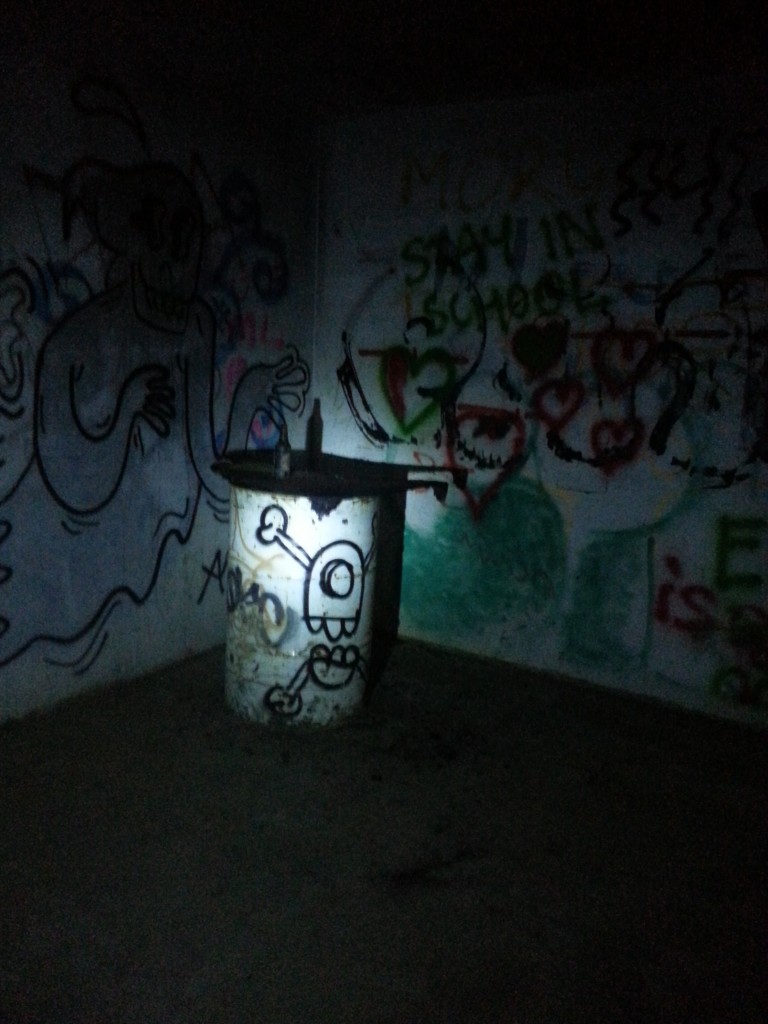
These rooms served as ammunition storage, housing for up to twenty soldiers, and as a shelter should the fort be attacked. One of them is flooded with several inches of mucky water.
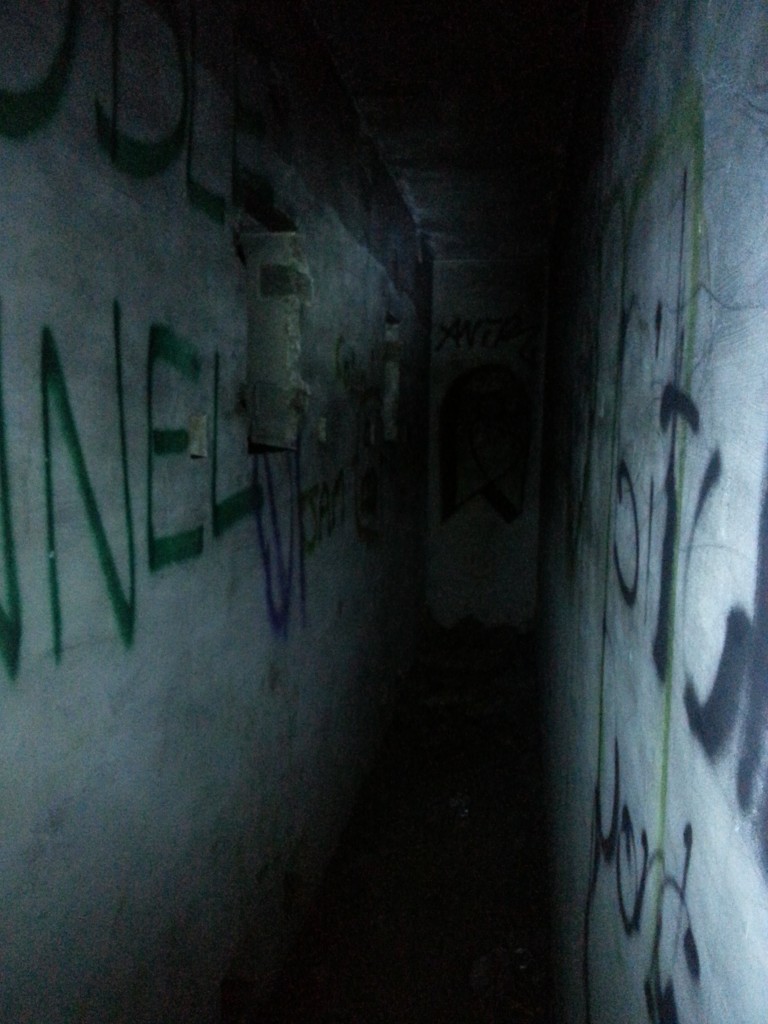
We exited through another stone arch and found ourselves next to a concrete wall with a circular pit set into it. This is one of two emplacements which housed 7-inch rifled muzzle loaders.

There were mixed reports of the usefulness of these guns when put to the test during drills in 1907. Some complained that they were worse than nothing, as they fired with a deafening retort and raised clouds of smoke, completely giving away their position. The gunmen would be sitting ducks as they struggled with the long reloading process, turning the gun to receive the shell (deadly to the crew if dropped) and then ramming it in place before aiming and firing.
On the other hand, an experiment proved they could be used to fire cannisters of shot which would spread out when fired and rain down over a large area, destroying a whole invading flotilla.
We continued along a long gorse-flanked path that took us down the hill to another concrete building, this one an old machine room.

Inside there’s not much left to reveal its original function, except a raised concrete platform in the middle of the floor with four bolts sticking out, and a pipe to nowhere. But that doesn’t mean there’s nothing to see.

It’s depressing to realise how much of Dunedin’s history was built on convict labour, and these defences were no exception. During construction, one of the military barracks in the area was used as a jail, and prisoners were engaged in road building and construction of the fortifications. In October 1898, two of the prisoners working on the interior of the Harington Point fort made a break for freedom, slipping away from the warders by pretending to be busy on errands.
Once they were discovered missing, a black flag was raised above the fortress to indicate that there had been an escape. All available hands were enlisted to search, including four warders, nine artillery men, two members of the Artillery Corps, and the crew of a boat that had just landed. Eventually two gunmen came across the escapees, who threatened them with rocks.
“Drop that and come along! We’ll have no humbug!” Gunman Lynch cried, and the escapees surrendered.
Remember those words if you ever need to defuse a tense situation.
In front of the machine room there are steps set into the ground which lead down to a forbidding tunnel. Armed with our torch, we adventured forth.
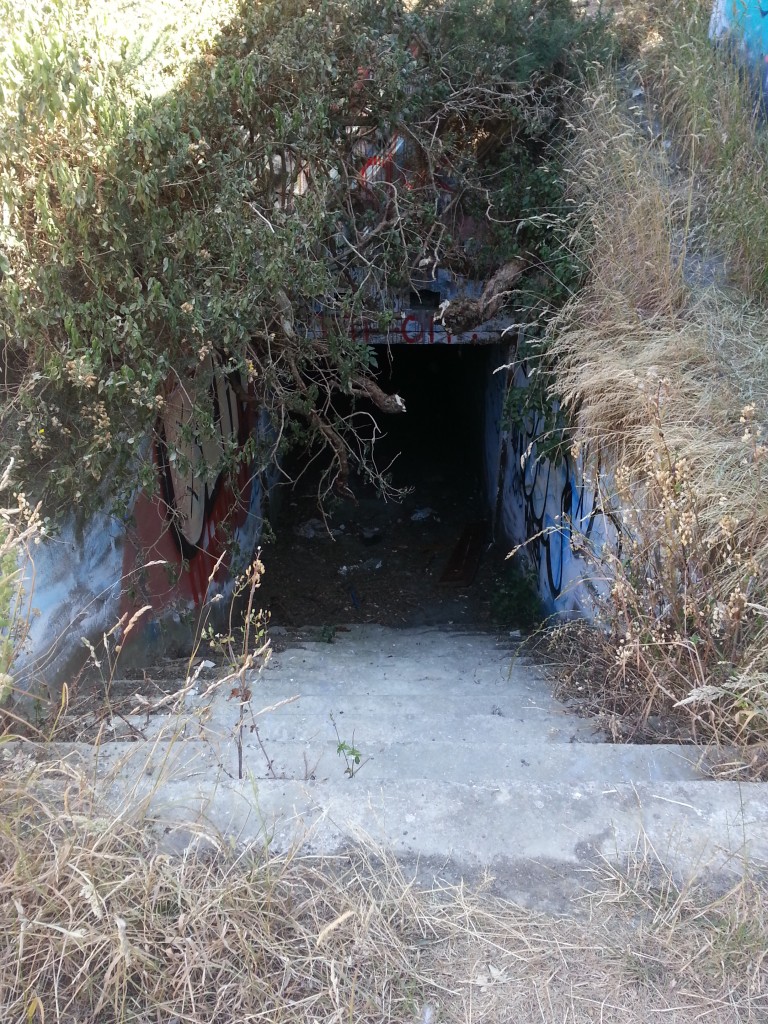
The tunnel is over 100 metres long and due to a bend partway through, light cannot be seen at the other end. This means walking into pitch darkness over a rough dirt floor.
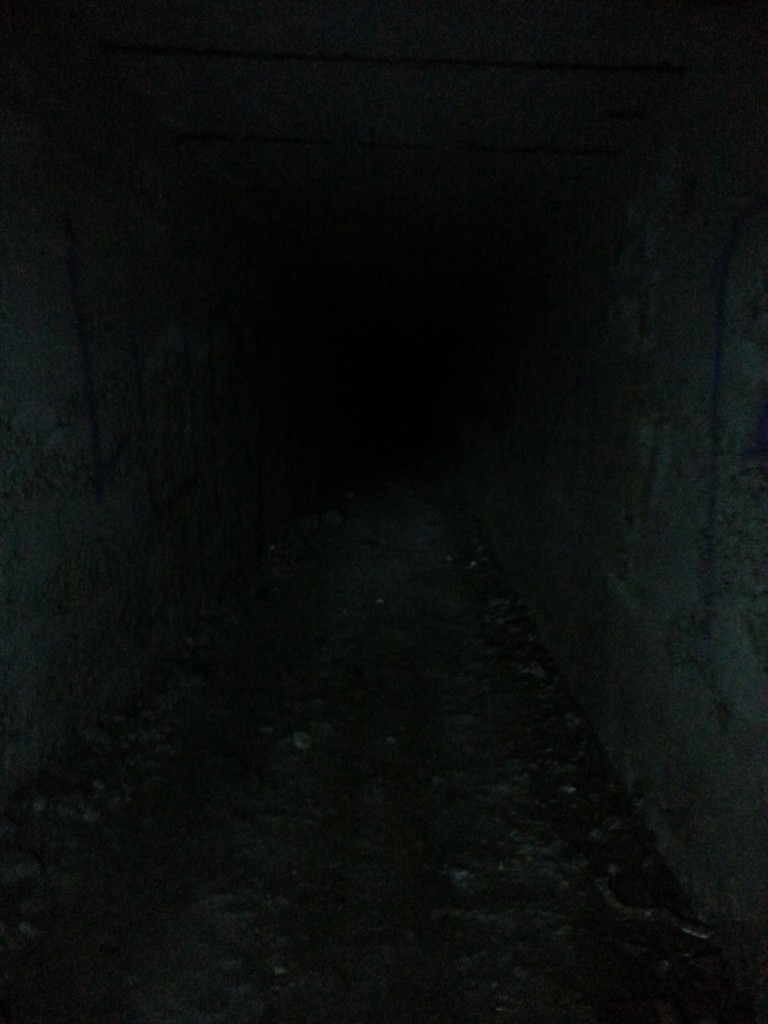
After stumbling through the pitch black tunnel, we emerged into a small concrete building near the shore. This is the old searchlight room, and has a wide empty window which from which the entire narrow strait can be seen.
A shag down on the rocks regarded us suspiciously.
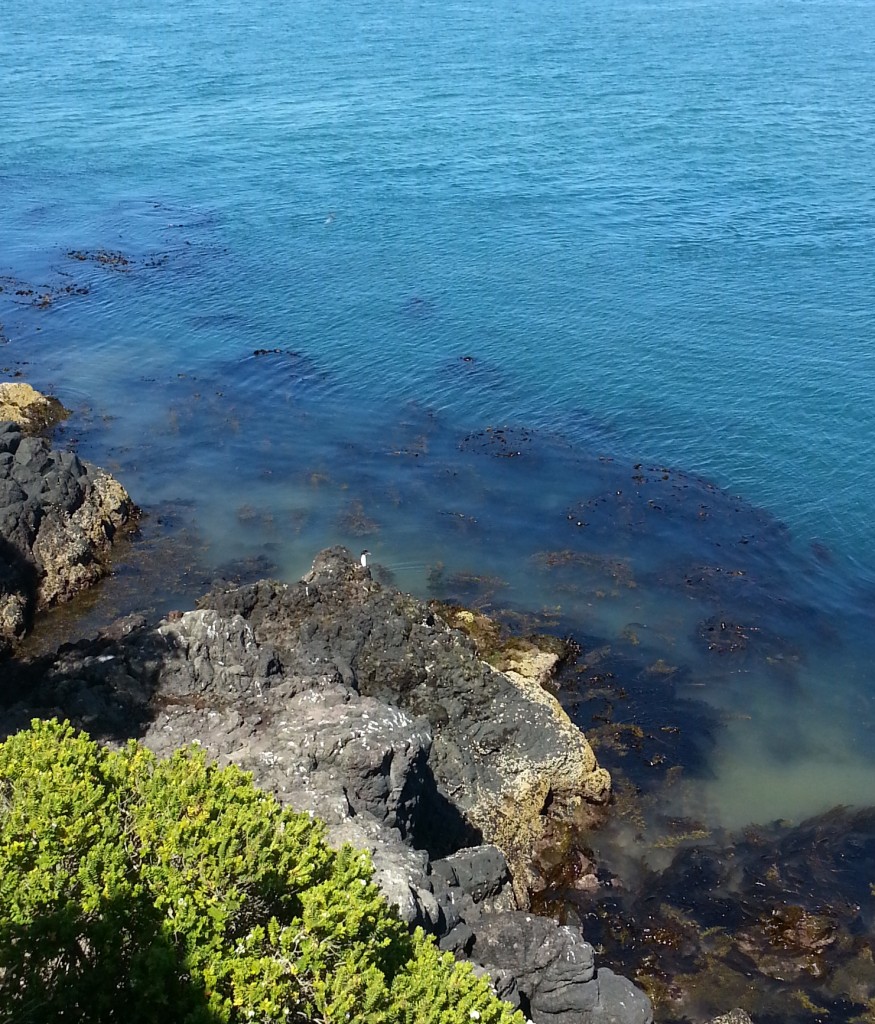
Looking up the coast we could see another emplacement, so we decided to climb out through the window and take the narrow cliff top path towards it. Coils of rusty barbed wire still guard this hillside from invaders.
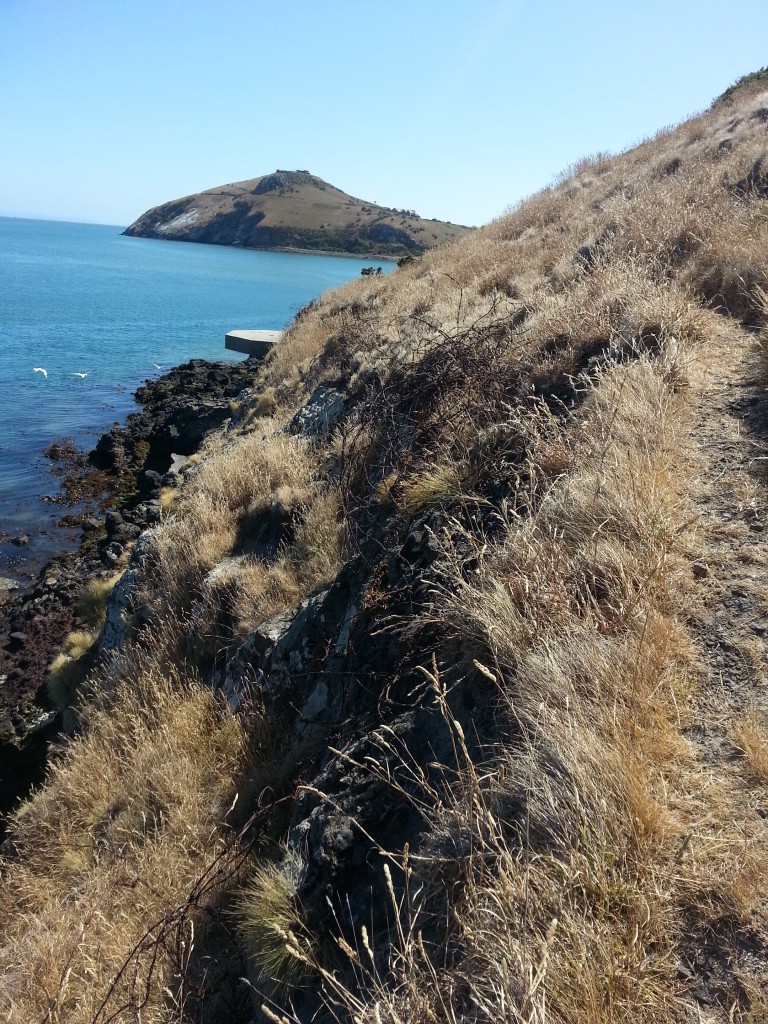
Now we reached something new. It’s another searchlight post, but this one was built in 1943. Fear of the Russians had subsided after 1905, when Japan had trounced the Russians in the Russo-Japanese war. New Zealand felt safe once again with Japan guarding the Pacific.
Until Pearl Harbour.
Construction on new coastal defences began the very next day.
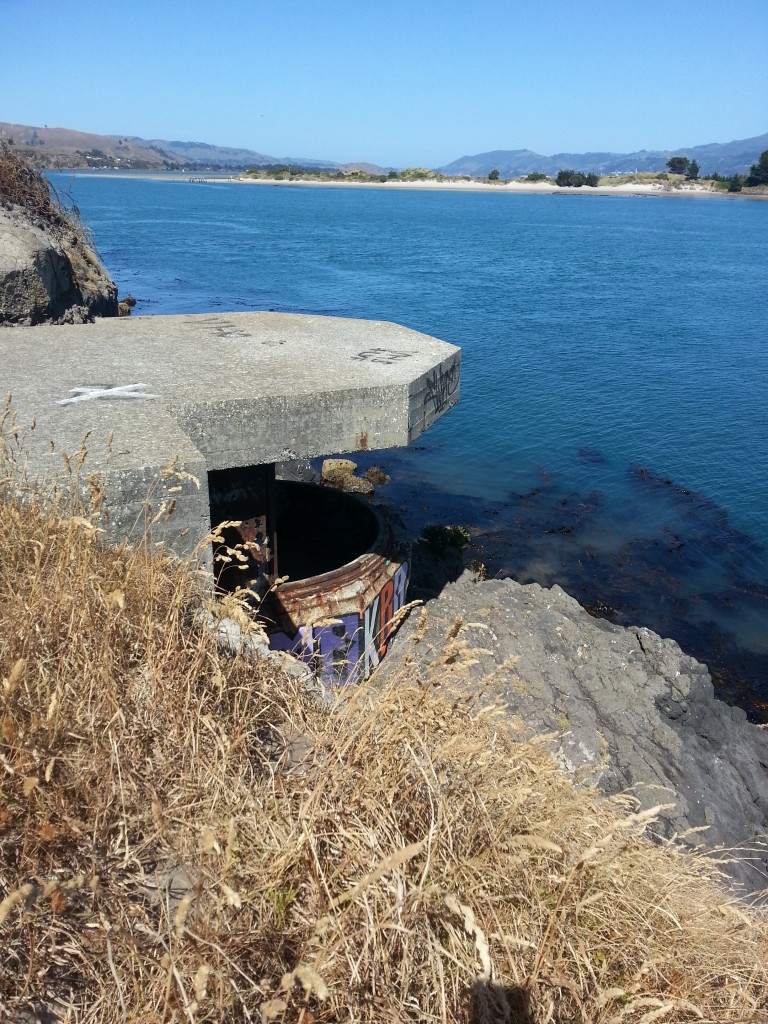
We carried on to the next relic of the Second World War and slipped inside through the large front window.

This emplacement and the other further north first held 15-pound Quick Firing guns, but they were quickly replaced with 6-pound Nordenfelt Quick Firing guns. They were designed to counter-attack small vessels attempting to enter the harbour.
Exiting through the back door of the emplacement, we found ourselves in a trench with a small complex of buildings.

On the left is an observation post while on the right is a tiny war shelter. Straight ahead is the second quick firing gun emplacement, which we entered.
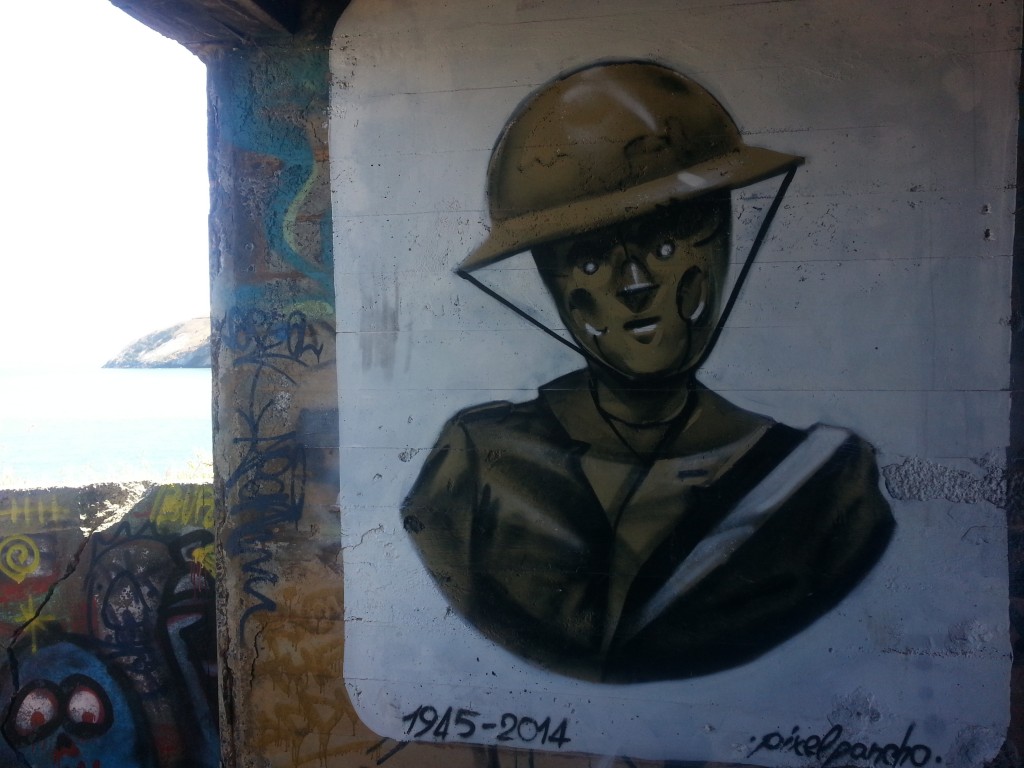
Inside the emplacement, two walls are dominated with large artworks. They are signed by Pixel Pancho, an Italian street artist who was involved in the Dunedin street art scheme. You may know him better by the huge artwork adorning the wall of Chipmunks.
We climbed up the nearby stairs and returned to the upper level.

We were now back where we started, but we weren’t quite finished. Further north there is another small complex. Most of it is from the 1890s, but there is a second engine room which was built during the Second World War.

The circular platform is where the second 7-inch rifled muzzle loader was mounted. Curiously, the platform intersects another small building.
We’d now seen everything, so we headed back to the vehicle, ready to go home. But then we remembered our promise to check out the krill phenomenon, so we stopped at a likely looking bay.
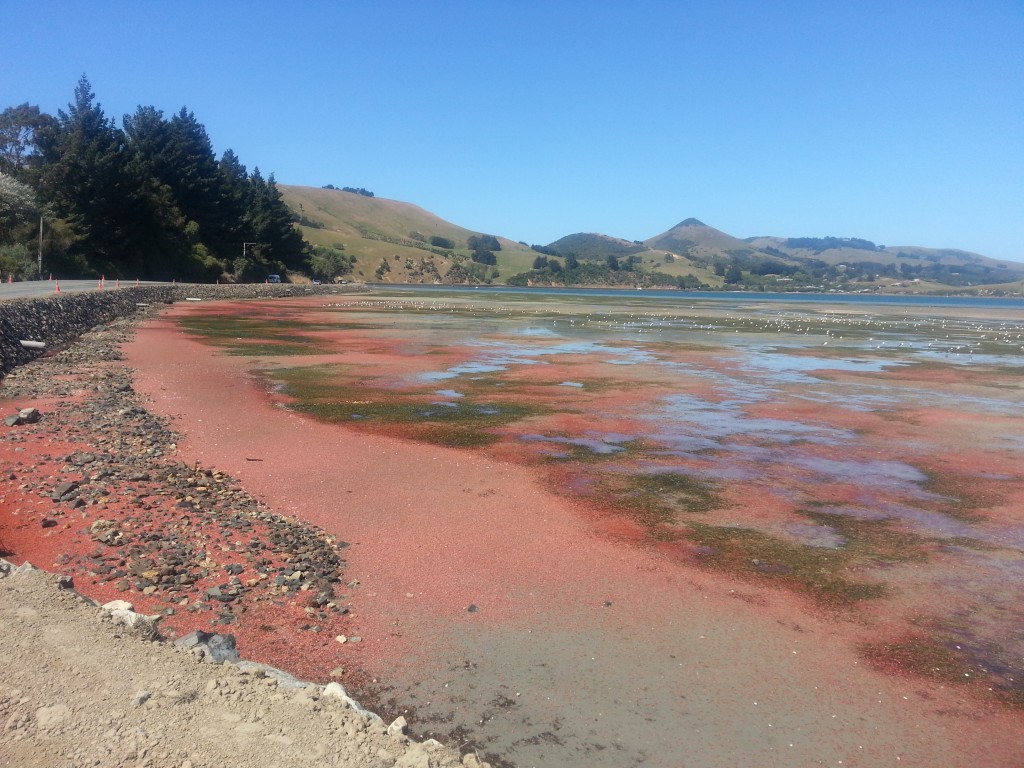
Descending to beach, we found the entire tidal flat covered with little red bodies. Gazing across the carnage, I noticed a constant quiet slithering noise. Looking closer, I realised there was movement. Some of them were alive! The little beasties waved their tiny claws pathetically, or clambered over their fallen comrades, all while hungry sea birds picked at them.
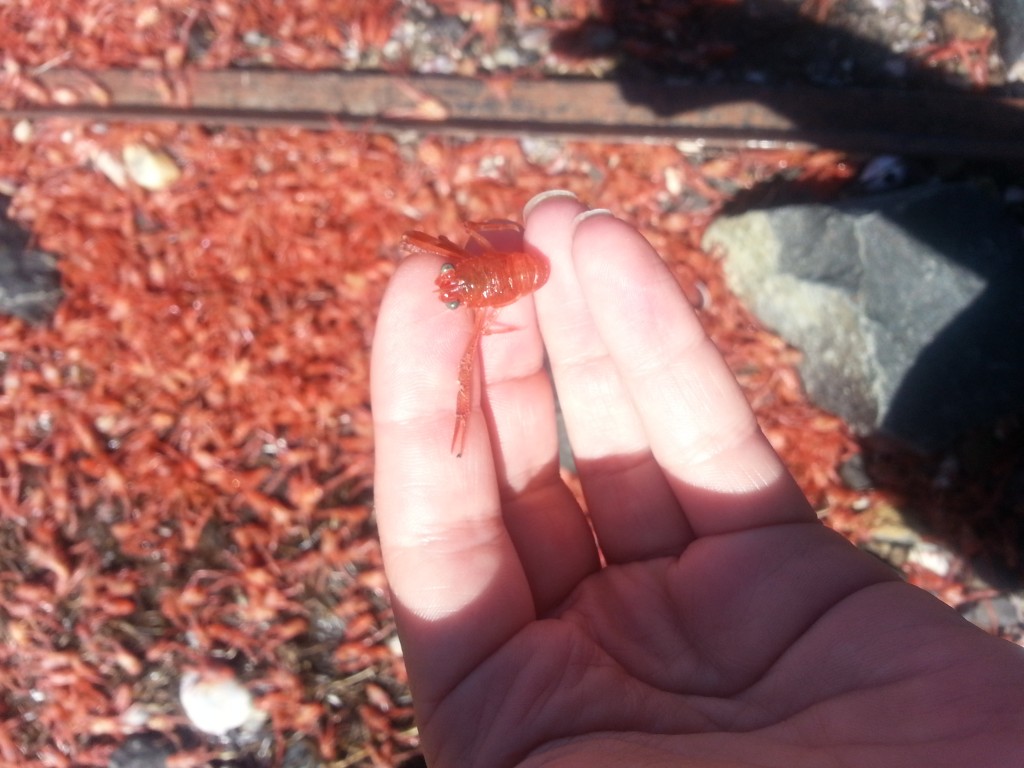
This was one coastal invasion no fortress could prepare me for, so I didn’t stick around. Back on Harington Point, the abandoned military complex remained, ready for an enemy would never come.
References:
COLONIAL DEFENCE. Evening Star , Issue 6038, 19 July 1882, Page 1
CLASS FIRING AT THE HEADS.Otago Witness , Issue 2801, 20 November 1907, Page 52
GUNNERY AT THE HEADS Otago Witness , Issue 2802, 27 November 1907, Page 40
Coastal Defence, Otago Peninsula Harrington Point
A DASH FOR LIBERTY. Otago Daily Times , Issue 11253, 25 October 1898, Page 6
Defending Dunedin: The Archaeology of Dunedin’s Coastal Fortifications 1885-1945 by Alex Scahill
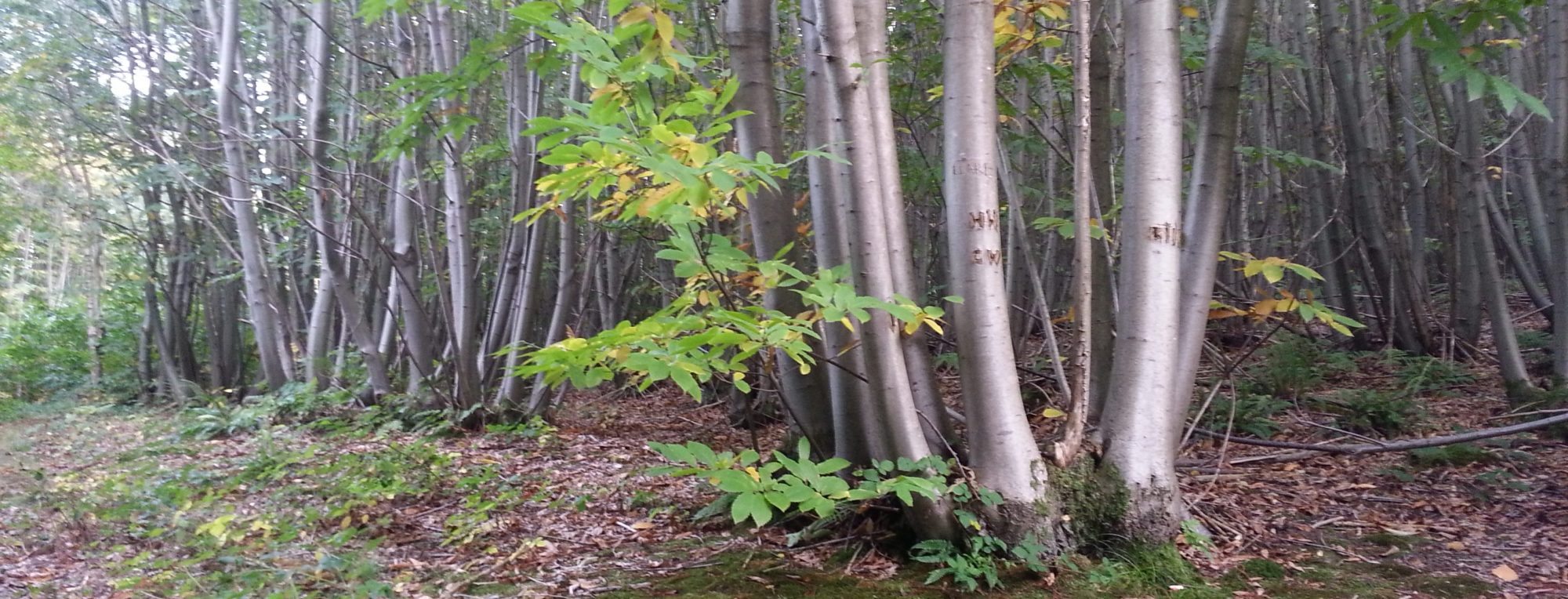
I enjoyed this well done
Thank you Pam!
They have emplacements very similar to these on the North Shore in Auckland. I don’t remember that much graffiti when I was there though. They even still have a gun there!
Cool! I think I remember visiting some in Wellington too!
I just visited the site and your story was agreat help. I did not climb out the searchlight bunker i found that to sketchy
I have tried to find the stairs you mention at the end of your story, that brings you to the upper llevel but i couldn’t find them..maybe that way up/down is now overgrown with gors
Finding the trench to the tunnel was already a bit of a challenge..if you didnt know it was there, you would not even think to try